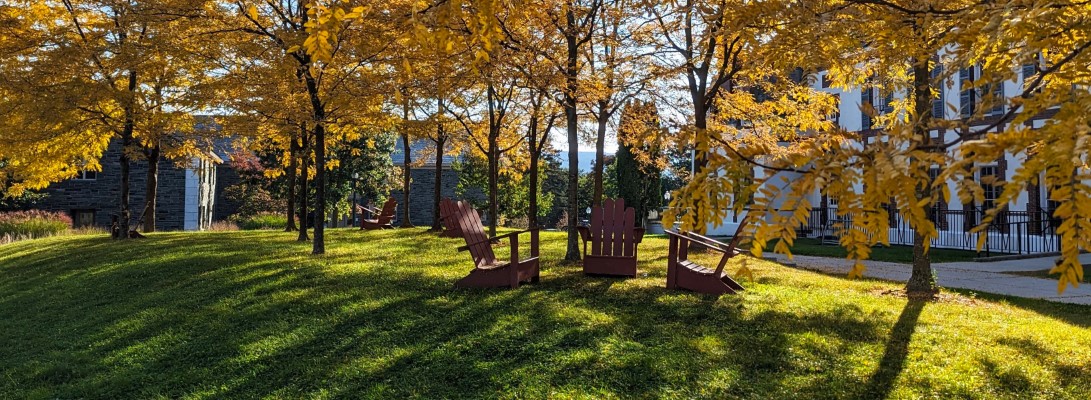There’s a new plant in bloom this week, and it’s all over the place. Amelanchier is the mouthful of a latin name, and it has several common names, including Shadblow, Serviceberry, and Juneberry. There are several in bloom by Starr/Axinn, some next to the Mahaney Center for the Arts, even some in the woods at Ridgeline.It’s a native tree/shrub, with many different species. I think of it as an understory plant, found out in the woods underneath the larger canopy, and it is often seen leaning out at the edges, looking for light. It is in the Rosaceae family, and indeed has small white blooms similar to apples and cherries. Smooth grey bark is attractive in it’s own right, and a nice golden fall color finishes the year. I think one of my favorite landscapes, and I would like to meet the person that planted it, is simply a pair of Amelanchier in front of the National Bank of Middlebury on Main Street. The white blooms against the brick building is spectacular, and even the bark plays well against it. It was a great subtle choice of plant material, and inspired.
The common name Shadblow comes from the phenological timing of the blooms. Shad are moving upstream to spawn now, and Amelanchier is in bloom. I had always heard the name Serviceberry referred to the fact that when it bloomed the early settlers knew the ground was thawed and they could bury their dead from the winter, but Charles Fergus in “Trees of New England” (great book) states that it just refers to the timing when circuit preachers came around in the spring to hold memorial services.
I guess I should talk about it’s fruit, small dark maroon things that appear in late June into July. Presumably they are great for eating, or for jam. I’ve never seen much, though, as it is highly prized by birds and beasts alike, and I seem to always be the last to the party.
